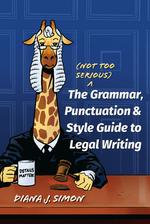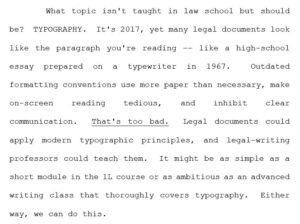Archaic legalese
This is part 4 of a series based on the study, Poor Writing, Not Specialized Concepts, Drives Processing Difficulty in Legal Language,[1] in which the authors compared contract language with everyday written English. The series concludes with my comments on a few words found in a 1.1 million-word corpus of commercial contracts. But first, I’ll acknowledge reality.
Lawyers prepare commercial contracts using forms and templates, and that saves time and money. It also provides assurance—risk avoidance. Suppose the form contract has been used in 20 or 30 or 50 other transactions, all of which closed and were performed without litigation. By relying on that form, you avoid risk, reassuring yourself and your client that this transaction, too, will be performed without serious problems. So retaining and re-using forms is a good practice, even if the forms use some archaic legalese.
But may I offer a few suggestions?
The following words are unnecessary because there are everyday equivalents, and some of them cause problems—albeit rarely—so I recommend deleting and replacing them. Parentheses show the number of appearances in the contracts corpus.
aforementioned (15), aforesaid (49)
The main problem with aforementioned is not that it’s a multi-syllabic monster; the problem is that it’s vague. As I said of aforementioned in 2008: “Why use this outdated word when its shorter cousin, aforesaid, is available? I’m kidding. Eliminate them both and specify what you’re referring to.”[2] In addition, the meaning of aforesaid has been construed in reported appellate decisions at least five times.[3]
herein (1093), hereinabove (7), hereinbefore (10), hereinafter (120)
Again, the problem is vagueness. As the legal-language expert David Mellinkoff put it, “Where? This sentence, this paragraph, this contract, this statute? Herein is the start of a treasure hunt rather than a helpful reference. The traditional additives are equally vague: hereinabove … hereinbefore … hereinafter ….”[4] Also, herein’s meaning has been litigated in at least 11 reported cases.[5]
said (214)
When used as a demonstrative pronoun or “pointing word,” said adds no precision, only a legalistic tone. As the contract-drafting expert Tina Stark says, “Said and such are pointing words. They refer to something previously stated. Replace them with the, a, that, or those.”[6] If “that party” is vague, changing it to “said party” won’t clear it up. And said’s meaning has been litigated 30 times.[7]
whereas (224)
This word appears in the formal, archaic recitals that proceed with a series of paragraphs beginning with “WHEREAS” and conclude with “NOW THEREFORE …” But Kenneth Adams, a leading expert on contract language, doesn’t like whereas: “The recitals serve a storytelling function. They’re the one part of a contract that calls for simple narrative prose. So don’t begin recitals with whereas, as this meaning of whereas—‘in view of the fact that; seeing that’—is archaic.”[8]
witnesseth (21)
At first, I found only 8 occurrences of witnesseth in the contracts corpus, and I was surprised but happy to think that its use was declining. Then I searched for it with a space between each letter: W I T N E S S E T H, and found 13 more. I think it needs to go, and so does the legal-language expert Bryan Garner: “This archaism is a traditional but worthless flourish. … There’s absolutely no reason to retain witnesseth. It’s best deleted in modern contracts.”[9]
Ultimately, retaining these words is probably harmless, but removing them is, too.
_____
[1] Eric Martinez, Francis Mollica, & Edward Gibson, Poor Writing, Not Specialized Concepts, Drives Processing Difficulty in Legal Language, Cognition 224 (2022).
[2] Wayne Schiess, Ten Legal Words We Can Do Without, Austin Lawyer 6 (May 2008).
[3] 2D Words & Phrases 294 (2020).
[4] David Mellinkoff, Mellinkoff’s Dictionary of American Legal Usage 283 (1992).
[5] 19A Words & Phrases 36-37 (2007 & Supp. 2021).
[6] Tina L. Stark, Drafting Contracts: How and Why Lawyers Do What They Do 257 (2d ed. 2014).
[7] 38 Words & Phrases 29-31 (2002 & Supp. 2021).
[8] Kenneth A. Adams, A Manual of Style for Contract Drafting 20 (3d ed. 2013).
[9] Bryan A. Garner, Garner’s Guidelines for Drafting & Editing Contracts 454 (2019).

